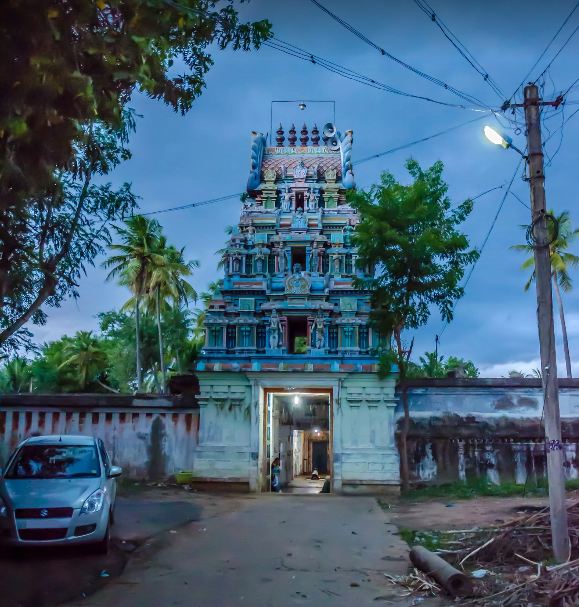Tirupullamangai Sri Pasupatheeswarar Temple, Thanjavur (Pullamangai)

Address
Tirupullamangai Sri Sri Pasupatheeswarar Temple, Pasupathikoil – 614 206, Thanjavur district. Phone: +91 9791482102, 8056853485
Diety
Pasupatheeswarar, Pasupathinathar, Brahmmapureeswarar, Amman: Alliangothai,Soundaryanayaki
Introduction
The Tirupullamangai Temple, located in Pasupathikoil, Papanasam taluk of Thanjavur district, Tamil Nadu, India, is a significant Shaiva temple that is part of the 275 Paadal Petra Sthalams, which are revered in the Tevaram hymns composed by the Tamil Saivite Nayanar Tirugnanasambandar.
Puranic Significance
- Tirupullamangai is one of the temples glorified in the hymns of Saint Tirugnanasambandar, who lived in the seventh century. It is the fifth temple in a series of seven praised by the Sapthamadhas (Divine Mothers) and Saptha Rishis (Seven Sages).
- The temple is associated with a unique legend about a Chola king named Kochengat Cholan, who was a spider in his previous birth. In his spider form, he spun webs to protect the Shivalinga from bird droppings and falling leaves. He demonstrated deep devotion to Lord Shiva in this way.
- Eventually, an elephant, also a devotee of Lord Shiva, removed the spider’s webs by performing an abhishekam (ritual bath) using water from the Cauvery River. The spider, in turn, entered the elephant’s ear, causing distress. To end this suffering, the elephant struck the ground with its tusk and died, and the spider too attained liberation.
- Kochengat Cholan, reborn as a king, built temples known as Mada temples, where elephants cannot climb. These temples served both religious and practical purposes by providing protection from floods, a recurring natural calamity in the region.
Deities and Sculptures:
- The temple’s presiding deity is Lord Shiva, known as Agastheeshwarar. The sanctum houses a large Shiva Lingam.
- The temple is known for its beautiful and powerful sculpture of Goddess Durga in the northern corridor. She stands on the head of a buffalo, holding various weapons, including a conch, discus, sword, bow, club, trident, armor, and angusam. The sculpture is remarkable for its detailed depiction.
- The surroundings feature unique sculptures, including two men approaching Goddess Durga—one about to chop off his own head, and the other offering blood sacrifice by tearing his lap.
- There are shrines for Chandeeswara, Navagrahas (nine planetary deities), Nandhi, and the Nalvar, who are the four Saivite saint-poets.
Architectural Features:
- The temple is constructed in an Agazhi-type structure, resembling a deep water canal security arrangement around a fort with crocodiles to prevent enemies from entering. This architecture reflects the need for flood protection in the Cauvery delta region.
Renovation and Cultural Influence:
- Over the centuries, the temple went through periods of neglect and disrepair. However, it was renovated and restored by various rulers, including the Chola, Nayak, and Maratha kings.
- The current temple architecture reflects a blend of Chola, Nayak, and Maratha influences.
The Tirupullamangai Temple has historical, cultural, and architectural significance. Its unique story of a spider’s devotion and the presence of the awe-inspiring sculpture of Goddess Durga make it a notable place of worship and a site for admirers of ancient art and architecture.
Beliefs
Excellence in education, prosperity and happy conclusions in marriage talks are the prayers submitted to the Lord. Devottees perform abishek with vastras to the Lord.
Festivals
Mahashivarathri in February-March, Aipasi Annabishekam in October-November and Margazhi Tiruvadhirai in DecemberJanuary are the festivals celebrated in the temple.
Century/Period/Age
1000 to 2000 years old
Managed By
Hindu Religious and Charitable Endowments (HRCE)
Nearest Bus Station
Tirupullamangai
Nearest Railway Station
Thanjavur
Nearest Airport
Trichy









